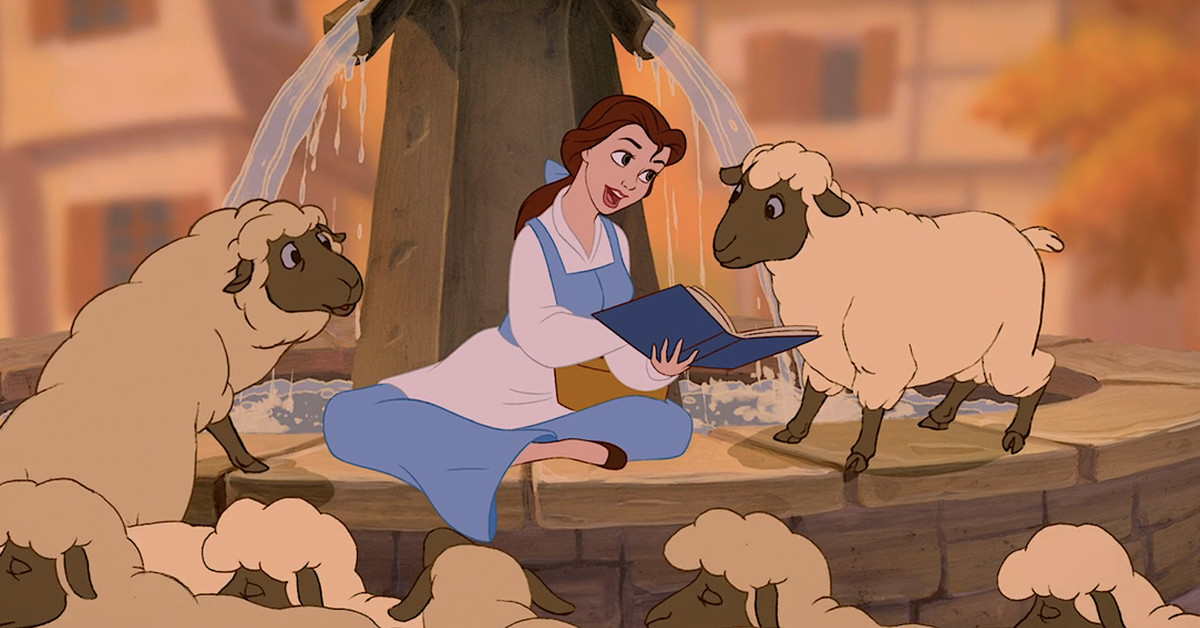
Right from the beginning, Walt Disney Animation Studios leaned heavily on existing books and stories for inspiration, starting with its first feature, 1937’s Snow White and the Seven Dwarfs. While this has resulted in some truly wonderful movies, the studio’s tendency to make major changes to its source material — toning down the original stories’ dark or violent content, and generally softening the edges — has also been apparent from the start.
It’s such a predictable part of the Disney process that the neologism “Disneyfication” has become a generic term for bowdlerizing a story into a tame kid-friendly version. Here’s a comprehensive rundown of Disney’s animated movies that are based on existing stories, noting the often surprising differences between the two, and ranking them in order from most faithful to least faithful.
24. The Great Mouse Detective (1986)
Based on: Eve Titus and Paul Galdone’s series Basil of Baker Street (1958-1982)
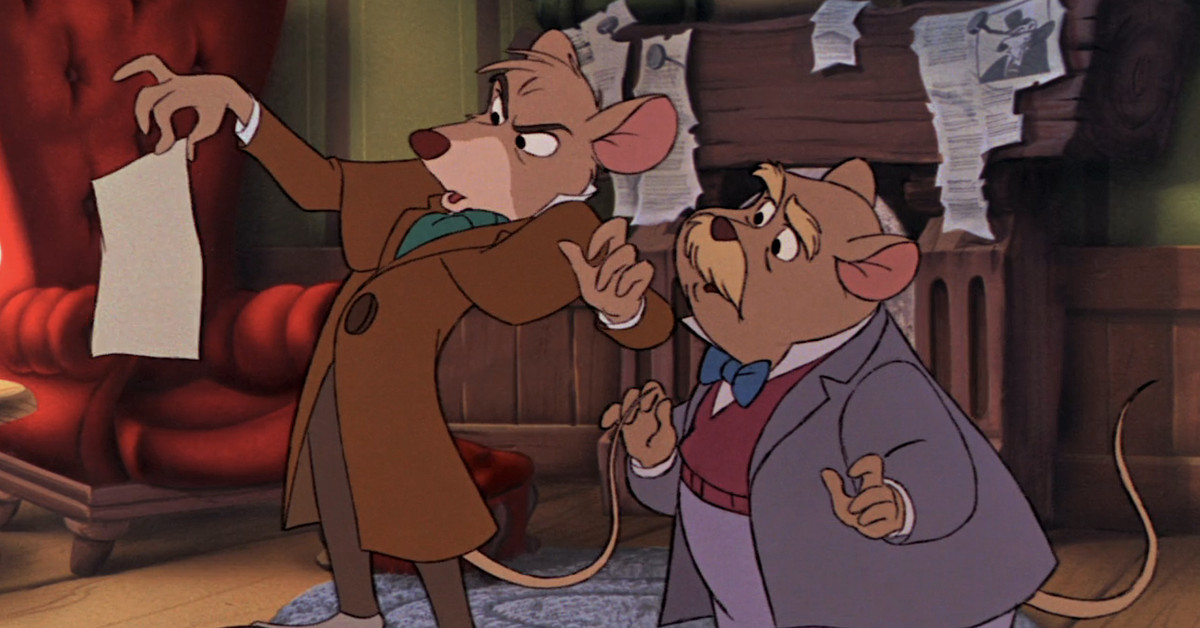
Image: Walt Disney Animation Studios
The Great Mouse Detective is an underrated gem that appears to have grown in both popularity and stature over the years, and it’s one of a few instances of Disney adapting material from a series of books, mixing storylines together. (In live action, you can see this clearly in movies like Mary Poppins, which is drawn from a series of eight books by P.L. Travers.) There aren’t many major differences between the books and the movie, save that the main character — Basil, essentially a mouse version of Sherlock Holmes — is a little less temperamental in the books. And curiously, unlike his inspiration, he plays the flute. Given that Basil actually lives in the same house as Holmes, who plays violin, this seems like an odd alteration.
23. Bambi (1942)
Based on: Felix Salten’s novel Bambi, a Life in the Woods (1923)
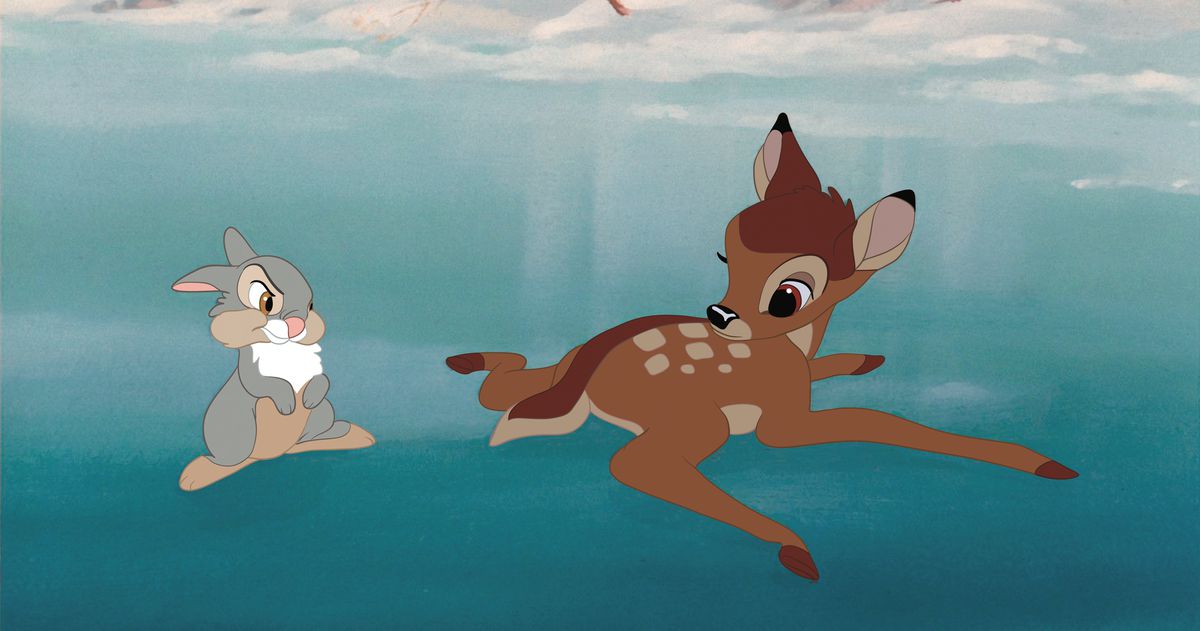
Image: Walt Disney Animation Studios
There are plenty of subtle, yet significant, alterations in Bambi’s trip from page to screen. Both versions start with Bambi’s birth, but in the book, it’s treated as no special event. Thumper and Flower are Disney creations, while Friend Hare and Faline’s twin brother Gobo didn’t make it into the movie. The death of Bambi’s mother, a scene that traumatized generations of children, comprises only a single line in the novel, and there’s no forest fire in the book.
22. The Adventures of Ichabod and Mr. Toad (1949)
Based on: Kenneth Grahame’s novel The Wind in the Willows (1908) and Washington Irving’s short story “The Legend of Sleepy Hollow” (1820)
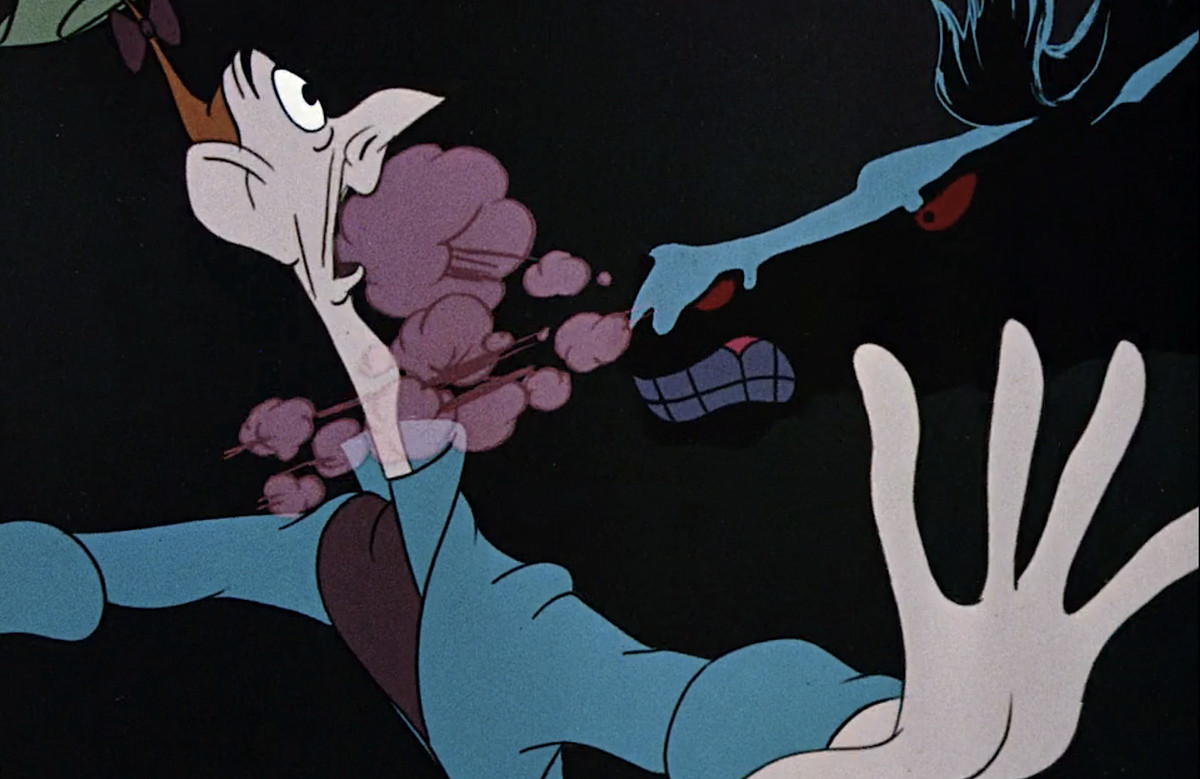
Image: Walt Disney Animation Studios
Disney’s anthology film The Adventures of Ichabod and Mr. Toad features condensed versions of its source material. For the Wind in the Willows segment, Toad stealing a car and escaping from jail is out, and a talking-horse character is added in. Unusually, the book’s ending is happier than the film’s, but overall, the two aren’t so dissimilar. The Legend of Sleepy Hollow section is one of the most accurate Disney interpretations, with the general feel of book and film matching closely. Even the original story’s ambiguous ending is present and correct.
21. Alice in Wonderland (1951)
Based on: Lewis Carroll’s novels Alice’s Adventures in Wonderland (1865) and Through the Looking-Glass (1871)
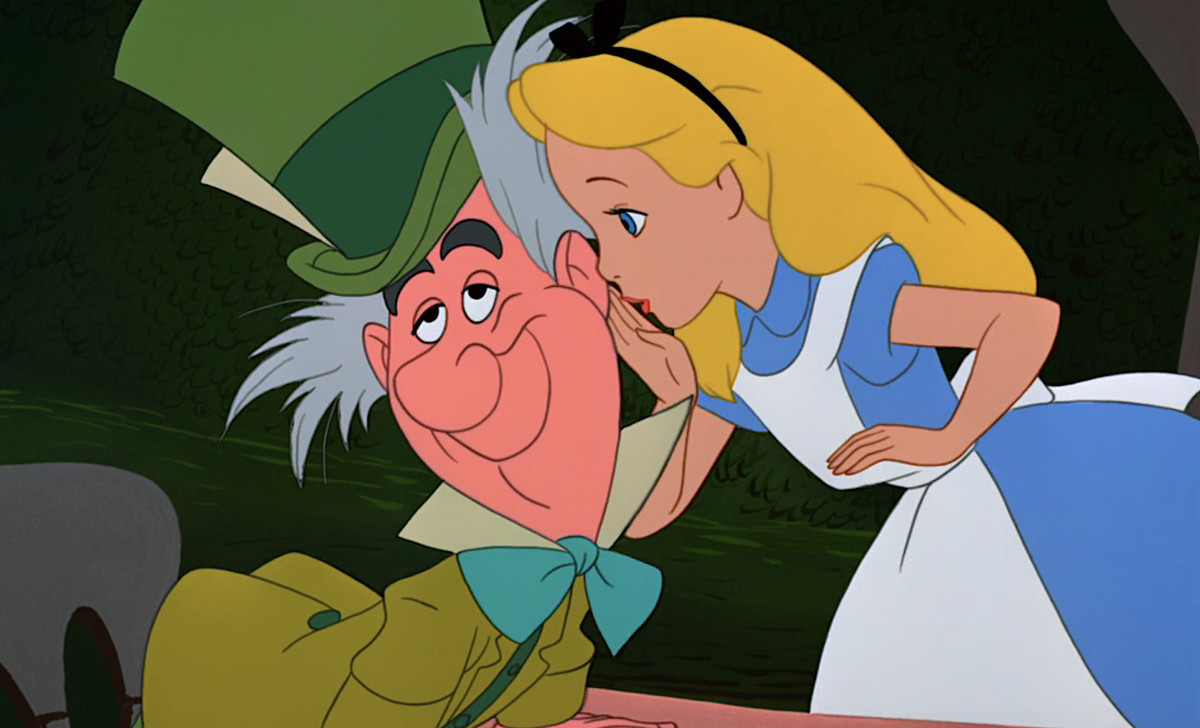
Alice, a blonde girl in a blue dress and apron, whispers into the ear of the Mad Hatter, a florid man in a huge green top hat, in Disney’s Alice in Wonderland
It’s a little difficult to evaluate this one, because Disney drew elements from two books and jumbled them up, mixing the timelines and making plenty of minor adjustments throughout — like Disney having Alice eat cakes to become smaller, rather than carrots, as in the source material. In the book, Alice is asked to recite the poem “You Are Old, Father William,” while the movie changes this to “How Doth the Little Crocodile” (although both poems are by Lewis Carroll himself). Characters say lines originally spoken by different characters; the King of Hearts is nice rather than mean; a couple of executions are left out; and two of Carroll’s most memorable characters, Mock Turtle and Gryphon, are omitted entirely (and therefore, so too is Mock Turtle’s wonderful song and dance act).
20. Cinderella (1950)
Based on: Charles Perrault’s short story “Cinderella” (1697)
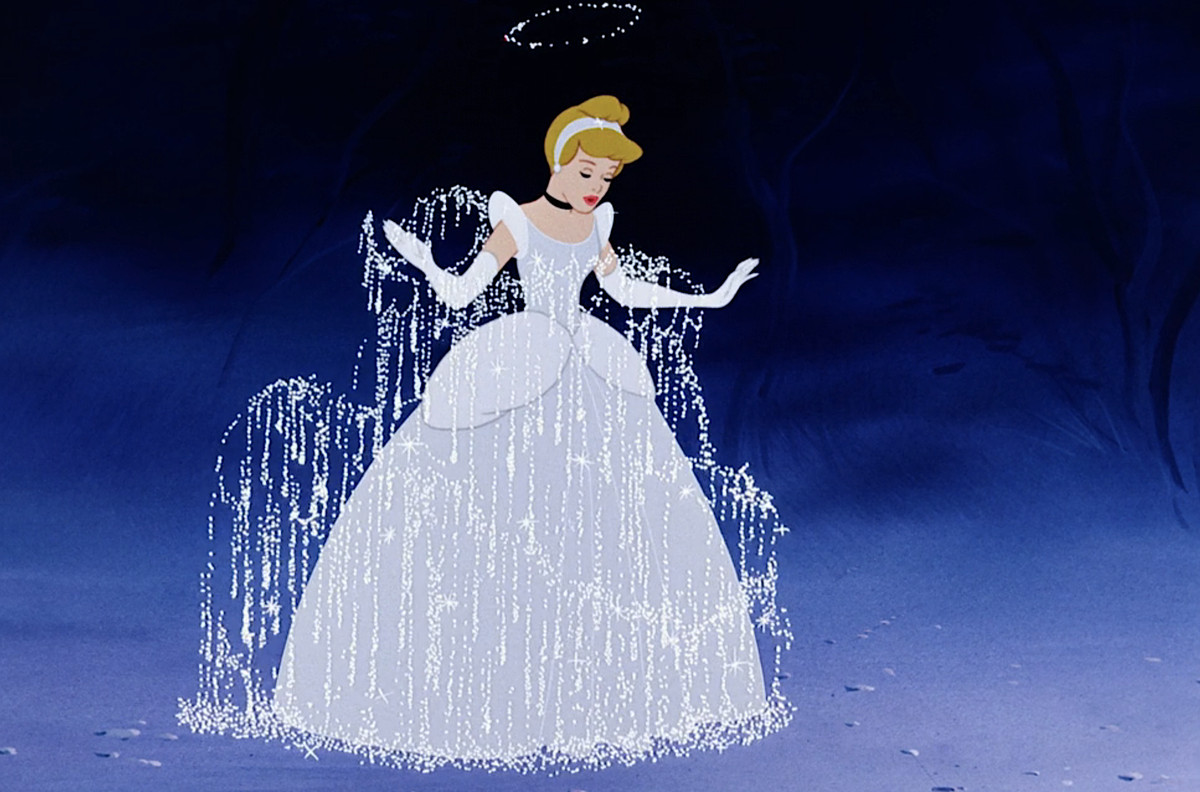
Image: Walt Disney Animation Studios
While the major plot arc here is the same, Perrault’s version leaves Cinderella’s father alive and very much under her stepmother’s thumb. There are no talking animal friends to be found in the book, Cinderella has a nicer room, the youngest stepsister is not so mean, and the prince’s mother is still alive as well. There are two royal balls in the original version (Cinderella only flees from the second), and the ending is more forgiving, with Cinderella inviting her stepsisters to come live in the palace once she marries the Prince, and finding them lords to marry as well.
19. Sleeping Beauty (1959)
Based on: Charles Perrault’s short story “The Sleeping Beauty in the Woods” (1697)
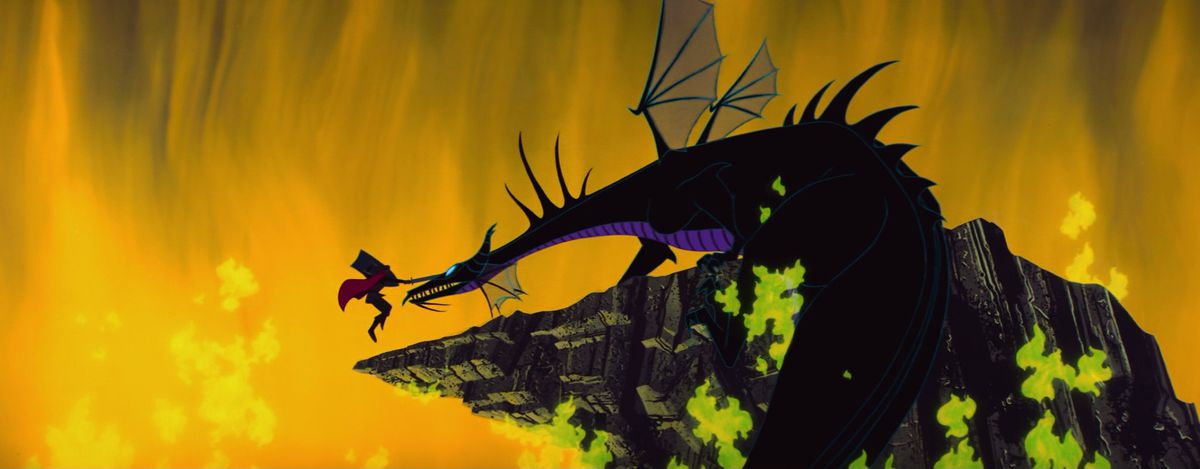
Image: Walt Disney Animation Studios
There are some very telling alterations between Charles Perrault’s original “Sleeping Beauty” and Disney’s interpretation, ones that perfectly sum up Walt Disney’s approach of taking an original story and ramping the romance factor up to 11 while keeping “traditional” values intact. For starters, Disney’s version has the prince and princess coming from the same era and knowing each other before she falls asleep, whereas Perrault’s princess sleeps for a century, so she’s much older than her beau. There is no “true love’s kiss” in the short story — all the prince has to do is show up, and Sleeping Beauty awakens. Perrault’s fairies grant the princess gifts of wit, grace, dancing, singing and music. Disney leaves out the wit!
18. 101 Dalmatians (1961)
Based on: Dodie Smith’s novel The Hundred and One Dalmatians (1956)
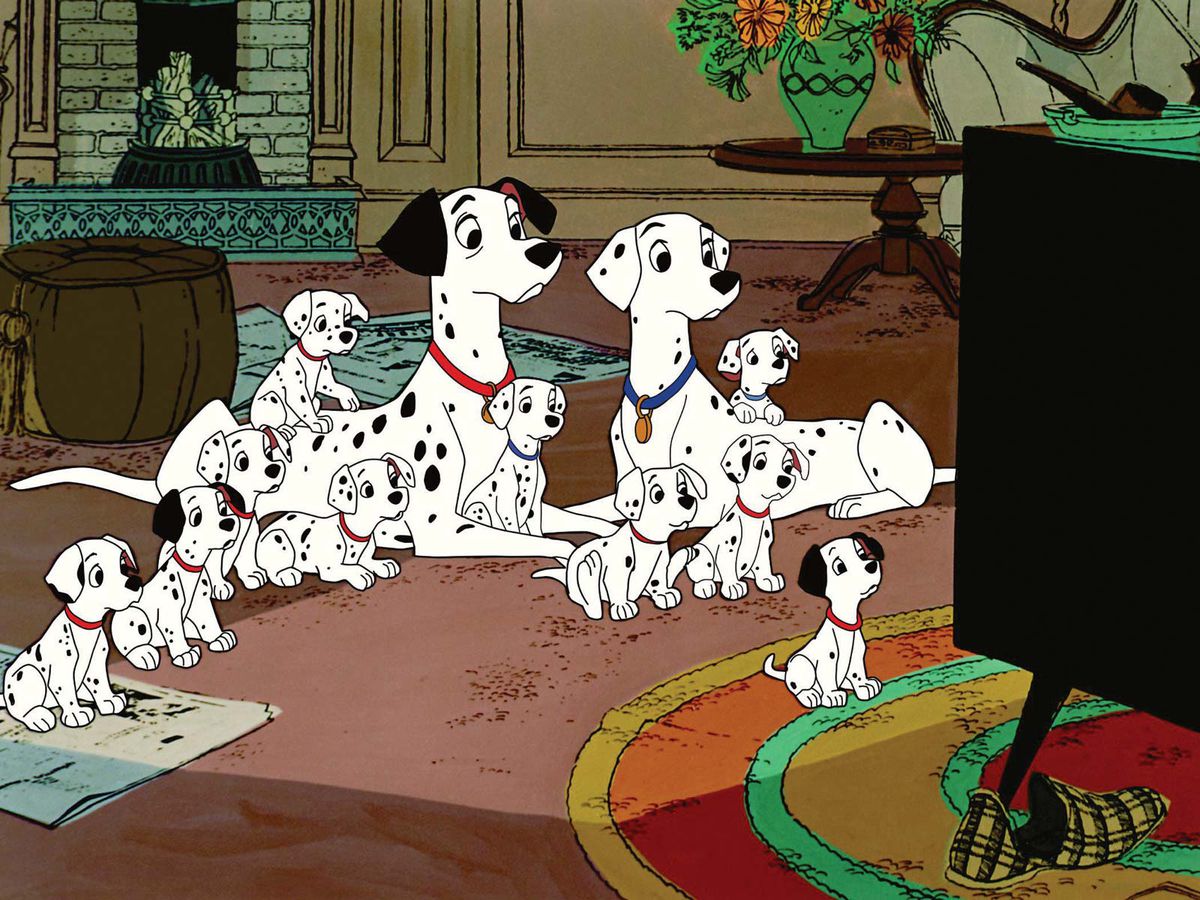
Image: Walt Disney Animation Studios
Some characters from Dodie Smith’s novel are omitted or altered for the film, but the big difference here is Disney’s toning down of Cruella de Vil, who’s a much darker character on the printed page. Gone is Cruella’s white Persian cat, who tells a very sorry story of years of neglect and abuse from her mistress, who periodically drowned the cat’s kittens. Cruella’s lines are also watered down — some of them are pretty extreme in the book, which also contains a lot of background and context that never made it to the screen.
17. The Many Adventures of Winnie the Pooh (1977)
Based on: A.A. Milne’s short-story collection Winnie-the-Pooh (1926)
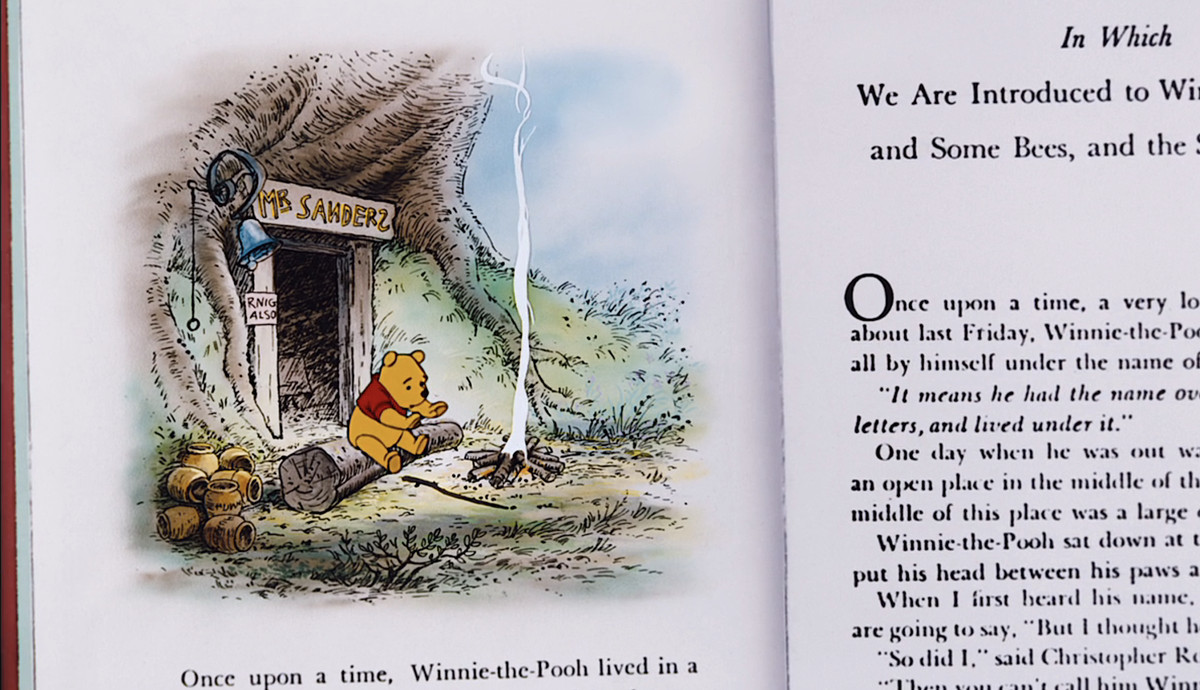
Image: Walt Disney Animation Studios
The biggest difference here is the visuals, with original Pooh illustrator E.H. Shepard’s monochrome line drawings translated to Disney’s full-color style. Normally, this might not matter so much, but Shepard’s less-is-more drawings add a particular atmosphere that is lost in the movies. The American accents alter things as well. Rabbit is a much-changed character, while Gopher is a Disney invention. Perhaps the biggest alteration is the omission of Milne’s songs, which are replaced by upbeat showtunes.
16. Peter Pan (1953)
Based on: J.M. Barrie’s play Peter Pan; or, The Boy Who Wouldn’t Grow Up (1904) and novel Peter and Wendy (1911)
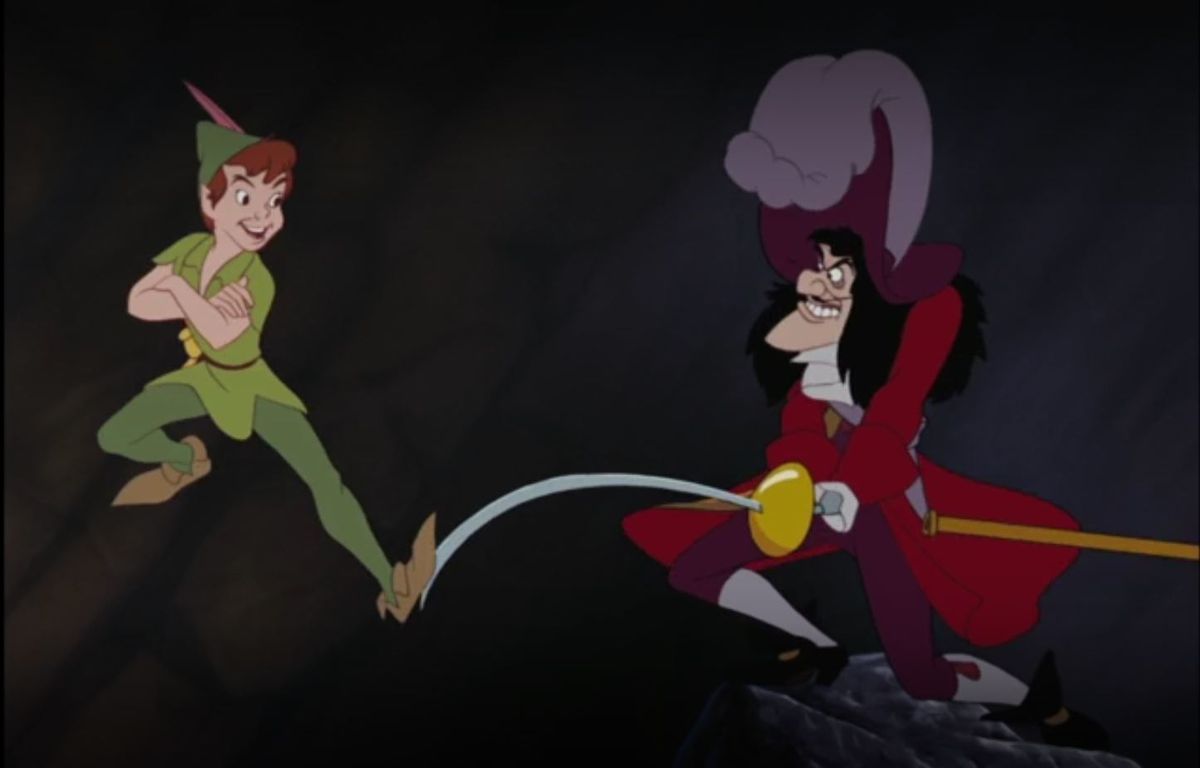
Image: Walt Disney Animation Studios
Disney considerably altered Peter Pan’s personality; in Barrie’s original work, the character is much meaner and even more self-centered. In the book, Peter’s motives stem from selfishness. He tolerates John and Michael Darling only because he wants to spend time with Wendy. Tinker Bell, by contrast, is far more capricious in Disney’s hands than in Barrie’s. The climactic fight between Peter and Captain Hook, and the book’s ending — no spoilers — are far more intriguing than those in the film.
15. The Jungle Book (1967)
Based on: Rudyard Kipling’s short story collection The Jungle Book (1894)
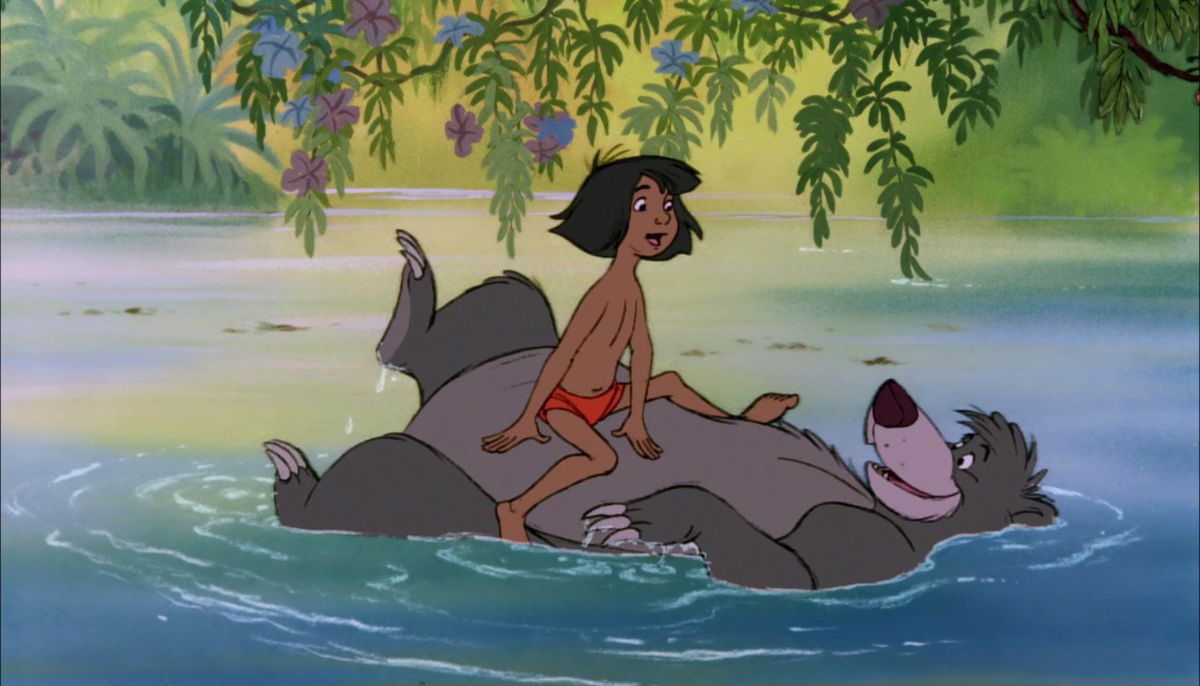
Image: Walt Disney Animation Studios
In The Jungle Book, Disney altered the dark, serious tone of pretty much all of the characters and their relationships as they stand in Rudyard Kipling’s work. In the original stories, Mowgli goes naked, expressing disdain for even a loincloth, and his relationship with Bagheera is far more equal. Kipling depicts Kaa as arguably Mowgli’s wisest and most helpful companion. King Louie is completely absent. Baloo, far from being frivolous and hedonistic, is a sweet caretaker who teaches Mowgli the Law of the Jungle. Shere Khan, on the printed page, is as pitiful as he is frightening.
14. The Rescuers (1977)
Based on: Margery Sharp’s novels The Rescuers (1959) and Miss Bianca (1962)
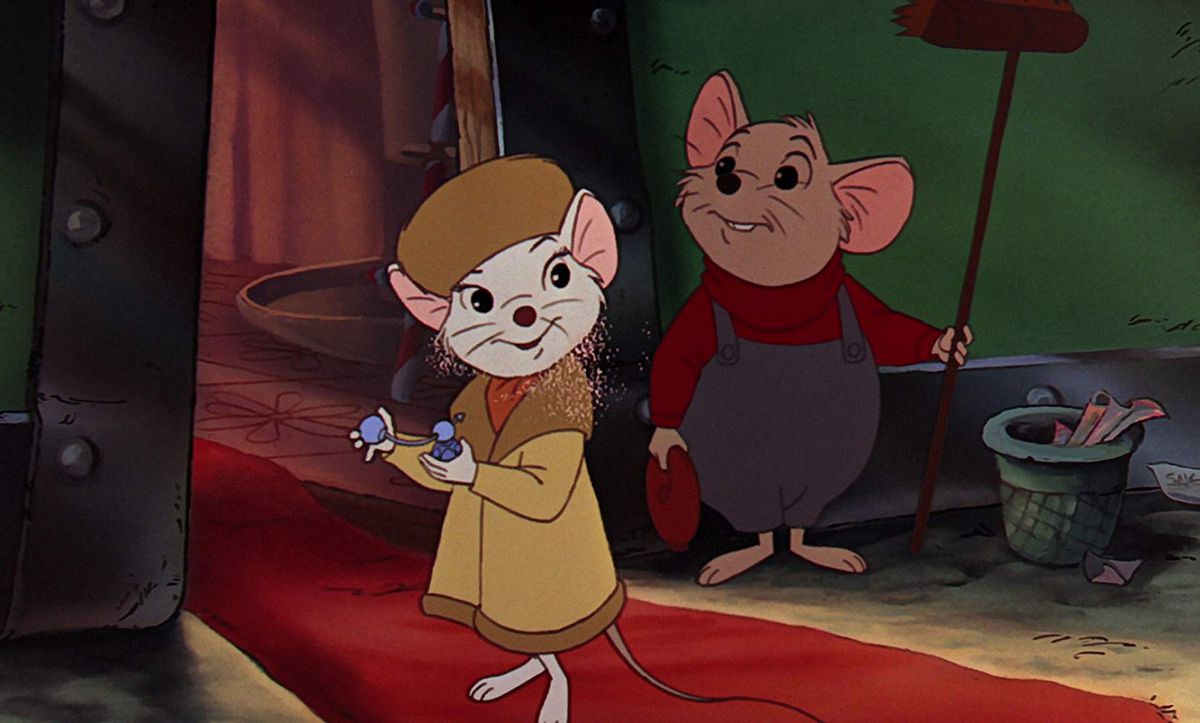
Image: Walt Disney Animation Studios
The Rescuers is another case of Disney taking material from more than one book. Plenty of things change from novels to screen here, big and small. Sharp’s Black Castle becomes Disney’s Devil’s Bayou; Madam Chairwoman becomes Mr. Chairman. The original plot, which involved the titular mouse heroes rescuing a Norwegian poet, is dropped. So too are the book’s passages concerning the class difference between Miss Bianca and Bernard, which prevents them from ever being more than friends. This film had a long and tortuous road to the screen, with multiple revisions to remove any hint of the original work’s politics.
13. Treasure Planet (2002)
Based on: Robert Louis Stevenson’s novel Treasure Island (1883)
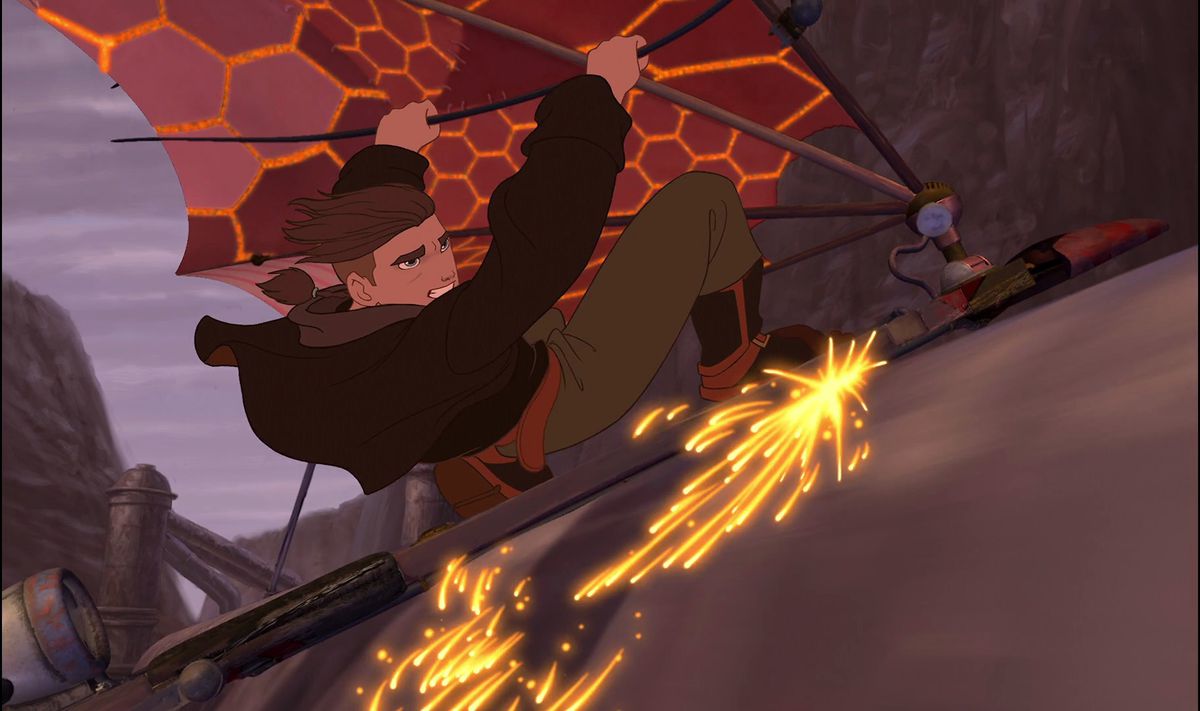
Image: Walt Disney Animation Studios
Leaving aside the setting, which Disney reimagines as a kind of steampunk sci-fi/fantasy world, the main differences between Treasure Island and Treasure Planet lie in the character of Long John Silver, and in Disney’s expunging of the violence present in the original. Stevenson’s Silver is far more dangerous and morally ambiguous. Disney’s world is a much safer place, and in the studio’s hands, Jim Hawkins is a tamer, more obedient character. Once again, slight yet important changes to the protagonist’s personality mean that the spirit of the original is drastically altered.
12. Tarzan (1999)
Based on: Edgar Rice Burroughs’ novel Tarzan of the Apes (1914)
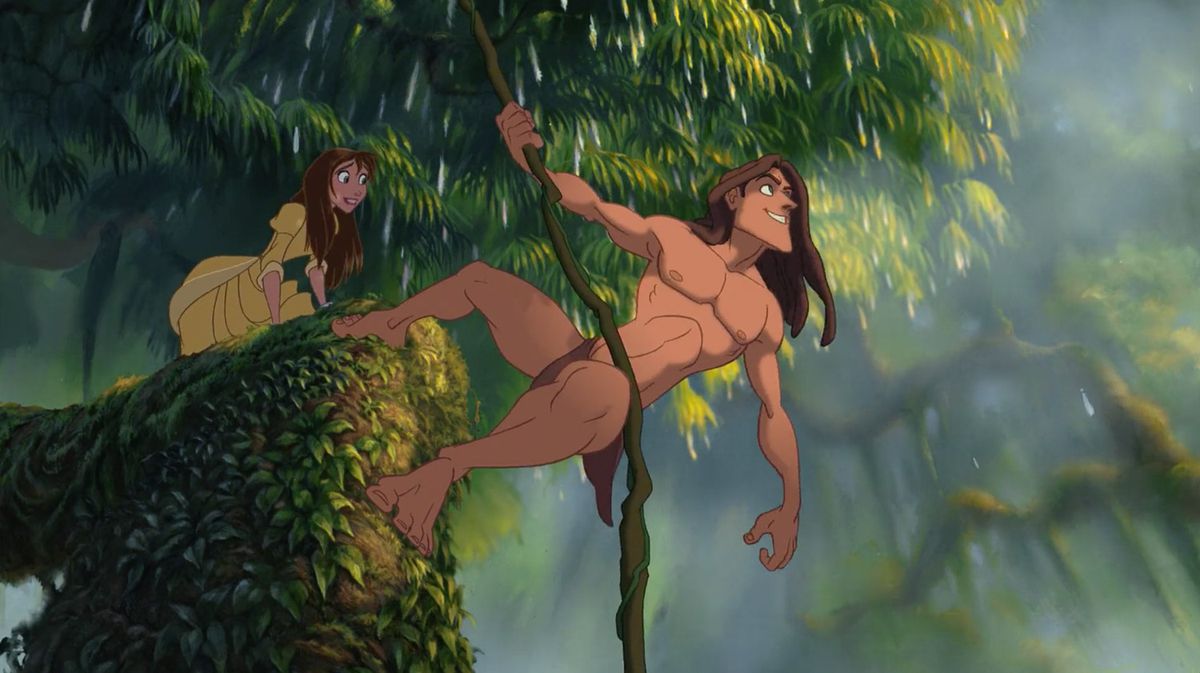
Image: Walt Disney Animation Studios
Disney significantly softened the personality of its protagonist for Tarzan. The Tarzan of the book is considerably more violent. There’s quite a bit of violence throughout the novel, with murderous fights between Tarzan and various animals, villains, and natives, the latter of whom are grossly portrayed as caricatures. Tarzan of the Apes also contains several chapters dealing with events after Tarzan and Jane leave the jungle, largely concerning Tarzan’s impressions of the “civilized” world, and the claiming of his birthright.
11. The Black Cauldron (1985)
Based on: Lloyd Alexander’s series The Chronicles of Prydain (1964-1969)
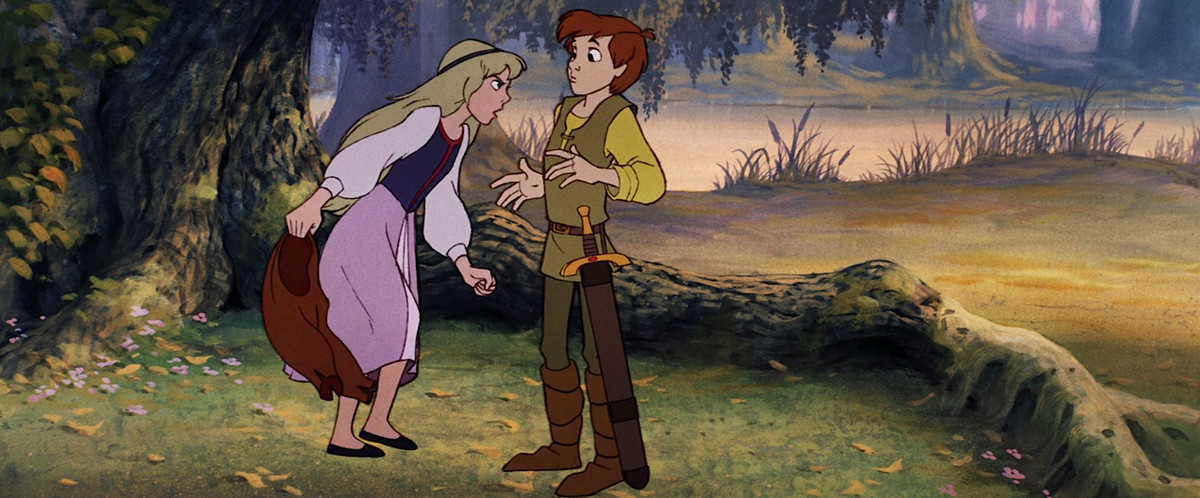
Image: Walt Disney Animation Studios
The descriptions of The Black Cauldron’s characters in the books are completely different from those on screen. The mythical races are also changed, with Disney’s Gwythaints looking like small dragons instead of the original’s eaglelike birds. Disney portrays the Fair Folk as miniature winged people, where Alexander has them come in a variety of shapes and sizes. There are major plot alterations, too. Locations, power dynamics, and the story’s ending are all fluffier in Disney’s hands.
10. Beauty and the Beast (1991)
Based on: Jeanne-Marie Leprince de Beaumont’s short story “Beauty and the Beast” (1756)
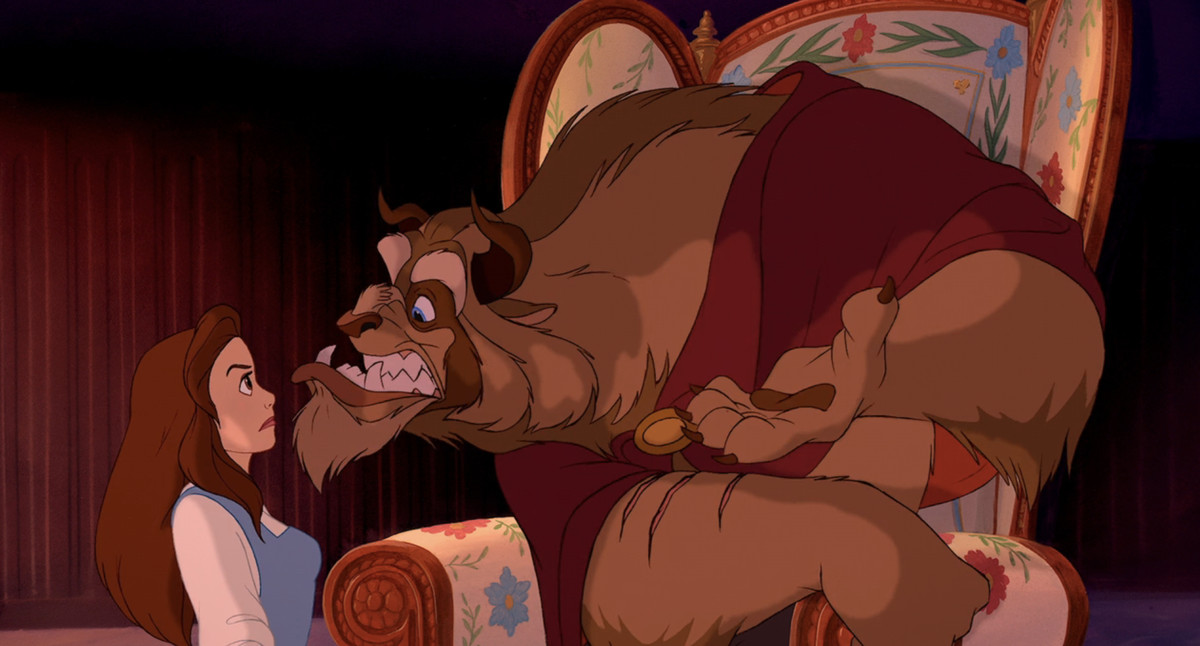
Image: Walt Disney Animation Studios
If there’s a pattern to this list, it’s one of Disney romanticizing and simplifying its fairy tale sources. There’s no Gaston or LeFou in the original story, which means there’s no angry mob out to harm the Beast. Lumière and Cogsworth are Disney inventions — in the original story, costumed birds and monkeys serve as Beauty’s companions. A crucial piece of backstory concerning the rose is omitted on screen, and the Beast’s transition to the Prince occurs halfway into the written story. For those wanting to watch a more faithful adaptation, see the 1946 live-action film of the same name directed by Jean Cocteau.
9. Meet the Robinsons (2007)
Based on: William Joyce’s picture book A Day with Wilbur Robinson (1990)
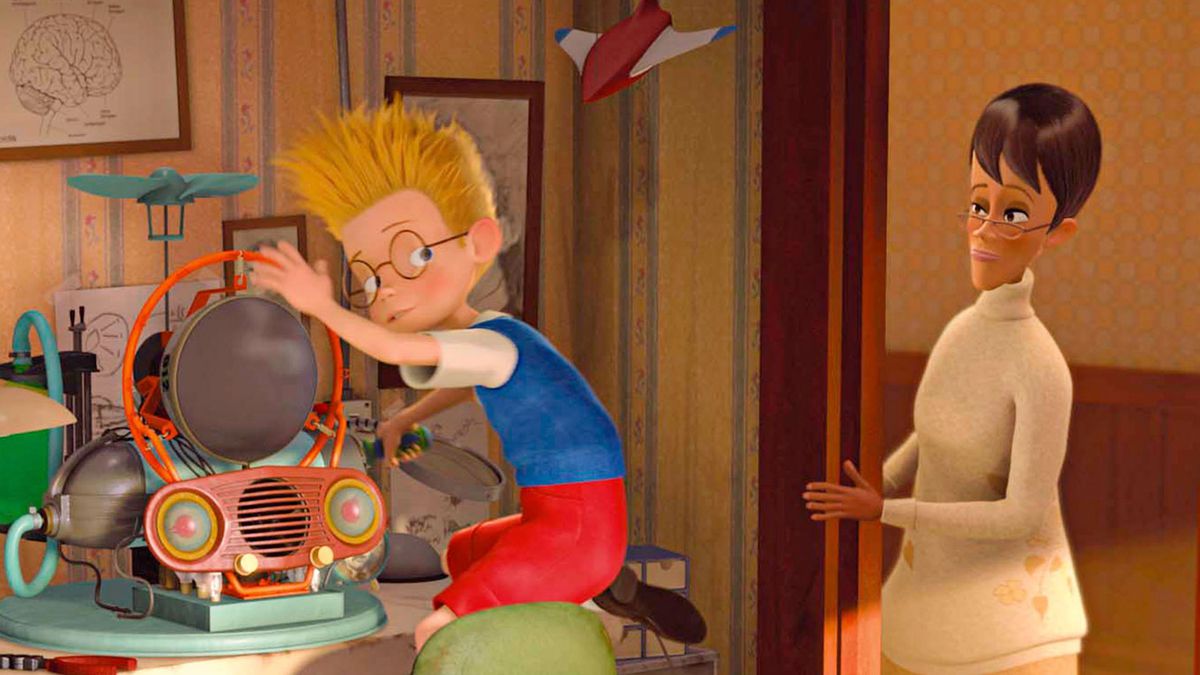
Image: Walt Disney Animation Studios
With Meet the Robinsons, Disney took the book as a starting point and extrapolated from there. Joyce’s A Day with Wilbur Robinson is a charming, rambling tale that really doesn’t have much of a plot. It’s about the journey, not the destination, as Wilbur and his friend Lewis search through the Robinsons’ extraordinary house in search of Wilbur’s grandfather’s missing false teeth. Pretty much everything else on the screen was added in by Disney’s filmmaking team.
8. Pinocchio (1940)
Based on: Carlo Collodi’s novel The Adventures of Pinocchio (1883)
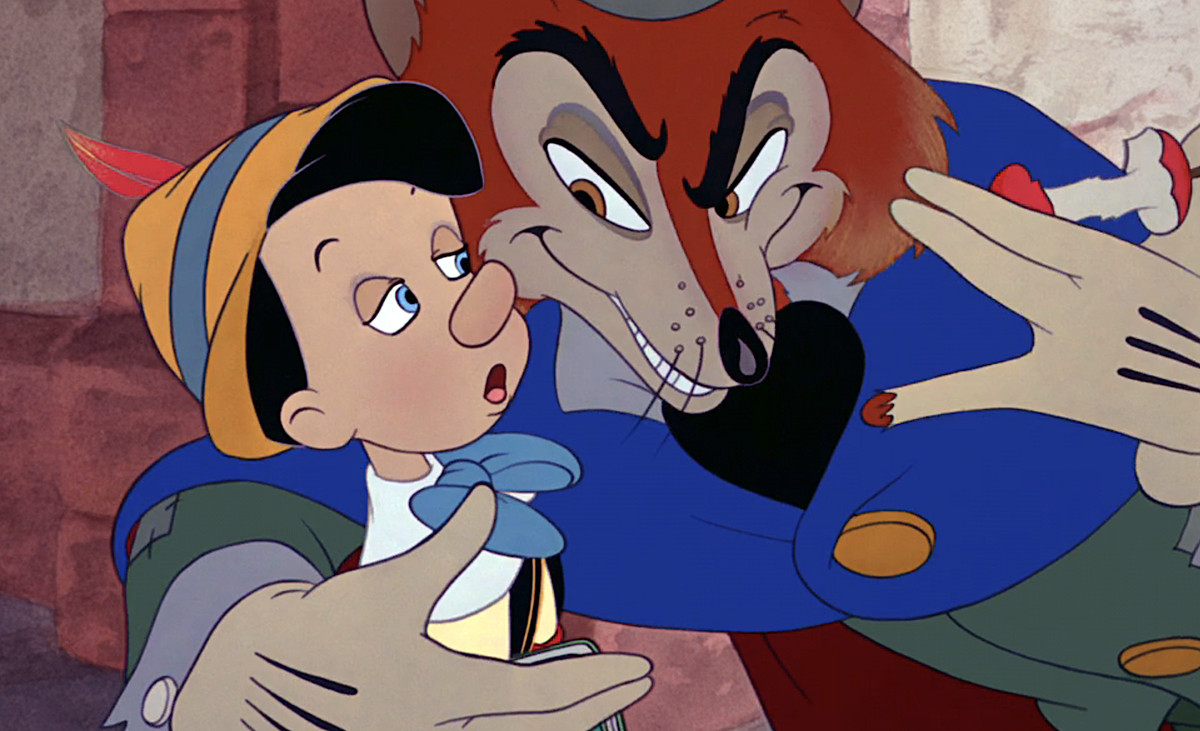
Image: Walt Disney Animation Studios
Remember Jiminy Cricket, the narrator and crooning troubadour who gave Disney its signature song, “When You Wish Upon a Star”? Toward the beginning of Carlo Collodi’s original children’s book, the lovable little fella lectures the wooden puppet Pinocchio on proper behavior. Irritated, Pinocchio throws a hammer at poor Jiminy and kills him. That isn’t the only radical departure from the novel, or the only grotesque violence Disney’s adaptation omits. Gepetto gets in a punch-up and is carted off to jail. Pinocchio gets his feet burned off in a fire, and he’s drowned and hanged, as well as turned into a donkey. The original version is much darker, and includes a lot more magic and mutilation.
7. Snow White and the Seven Dwarfs (1937)
Based on: The Brothers Grimm’s fable “Snow White” (1812)
Image: Walt Disney Animation Studios
The original “Snow White” fairy tale is far less fluffy and romantic than the film. In the Brothers Grimm’s version, the Wicked Queen doesn’t ask her huntsman for Snow White’s heart — she wants her lungs and liver. Snow White isn’t awakened by a prince’s kiss; her coffin is dropped, which dislodges a piece of the Witch’s poison apple from her body, letting her wake up again. The Grimms also have a far more distasteful end for the Wicked Queen — she’s forced to dance in red-hot iron shoes until she dies. Lovely.
6. Aladdin (1992)
Based on: The folk tale “Aladdin and the Wonderful Lamp” from the collection One Thousand and One Nights
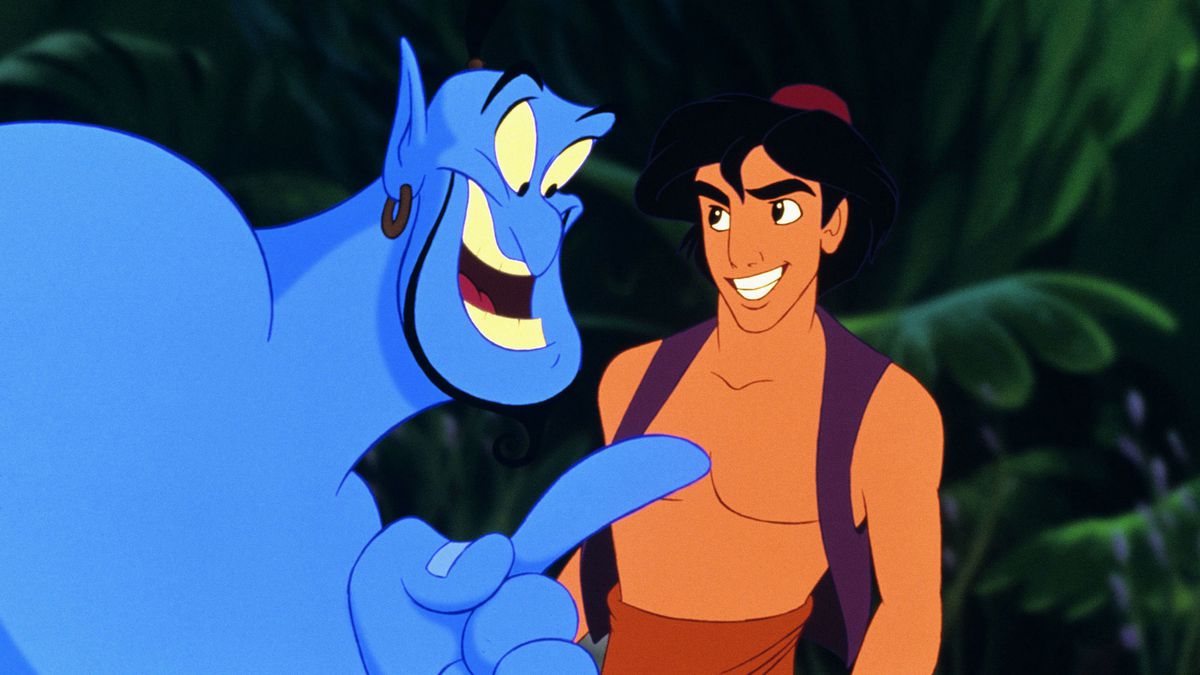
Image: Walt Disney Animation Studios
Disney made innumerable alterations to the centuries-old tale of Aladdin. The setting is changed from China to the Middle East, and Aladdin’s parents are absent. (In the original story, Aladdin’s mother plays a prominent role.) Abu and the magic carpet are both Disney inventions, as are Jafar and his parrot sidekick, Iago. The genie plays a very minor role in the folk tale. Even putting aside the songs, Robin Williams’ magnificent performance as the Genie, and his numerous pop-culture references, Disney’s version doesn’t have much in common with its source except a poor boy, a magic lamp, and a genie who grants wishes.
5. The Princess and the Frog (2009)
Based on: E.D. Baker’s novel The Frog Princess (2002)
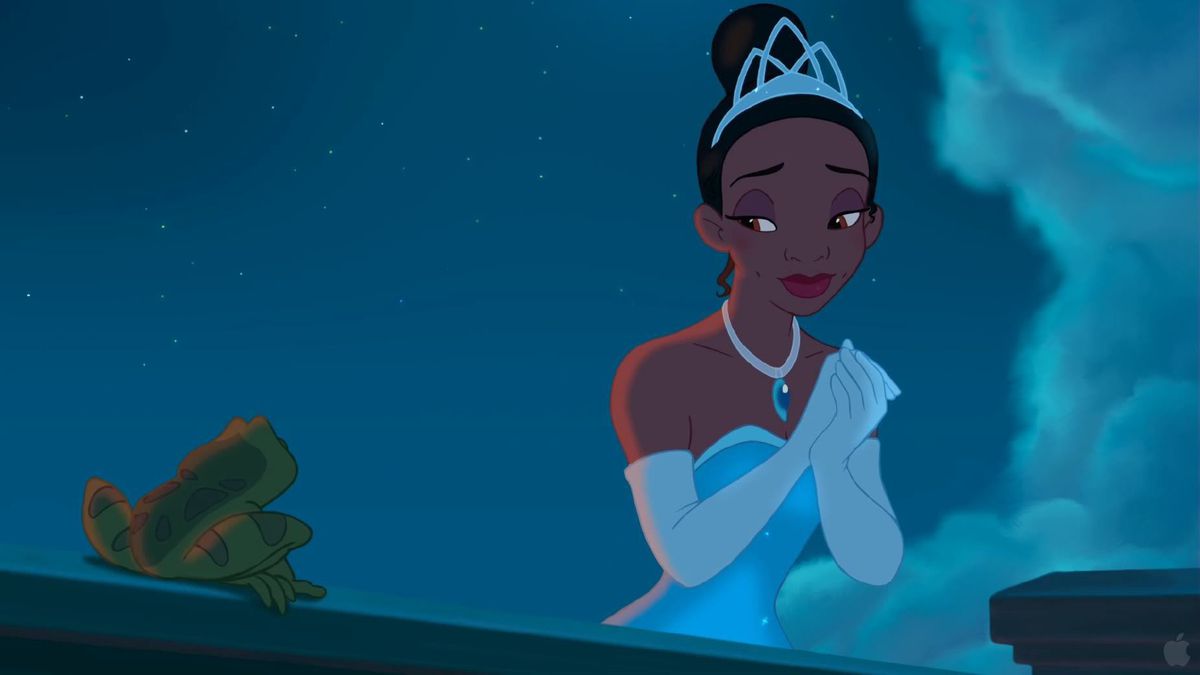
Image: Walt Disney Animation Studios
The Princess and the Frog is another case of Disney transplanting a setting wholesale, on this occasion from the medieval fantasy world of The Frog Princess to 1920s New Orleans. At the start of E.D. Baker’s book, the princess lives with her mother, Queen Chartreuse, whereas Disney’s protagonist is a humble waitress. That’s just the start of a long list of differences. The plot bears very little resemblance to that of the book, and the novel’s central message — about not judging by appearances — is replaced with one about finding the right work-life balance.
4. Tangled (2010)
Based on: The Brothers Grimm’s fairy tale “Rapunzel” (1812)
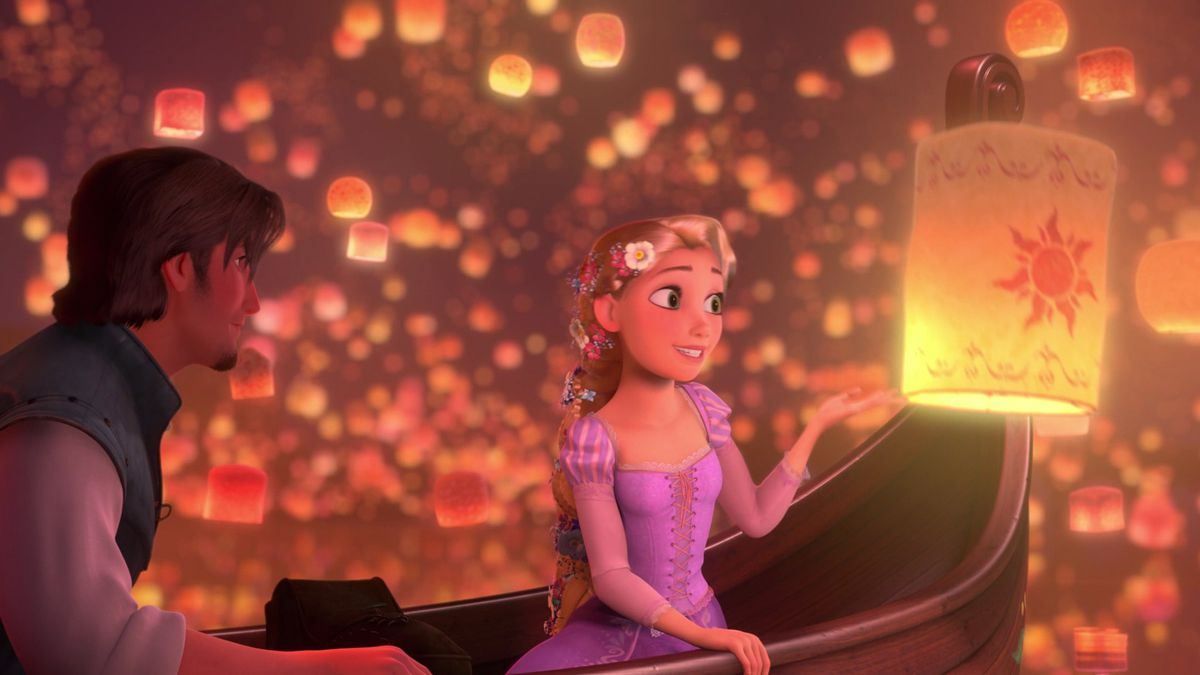
Image: Walt Disney Animation Studios
Beyond the concept of a princess with long hair who’s locked in a tower, there isn’t much from the Brothers Grimm’s version that makes it to the screen. Rapunzel isn’t a princess in the original story; her visitor at the tower is a prince; and there’s a nasty turn in the fable that sees said prince wandering in the desert, his eyes pricked out by thorns. Disney reverses the social roles, making Rapunzel’s visitor a lovable thief. Almost every other plot point, including the magic hair, Mother Gothel, and the bar full of heroic reprobates, is a Disney original.
3. Oliver & Company (1988)
Based on: Charles Dickens’ novel Oliver Twist (1838)
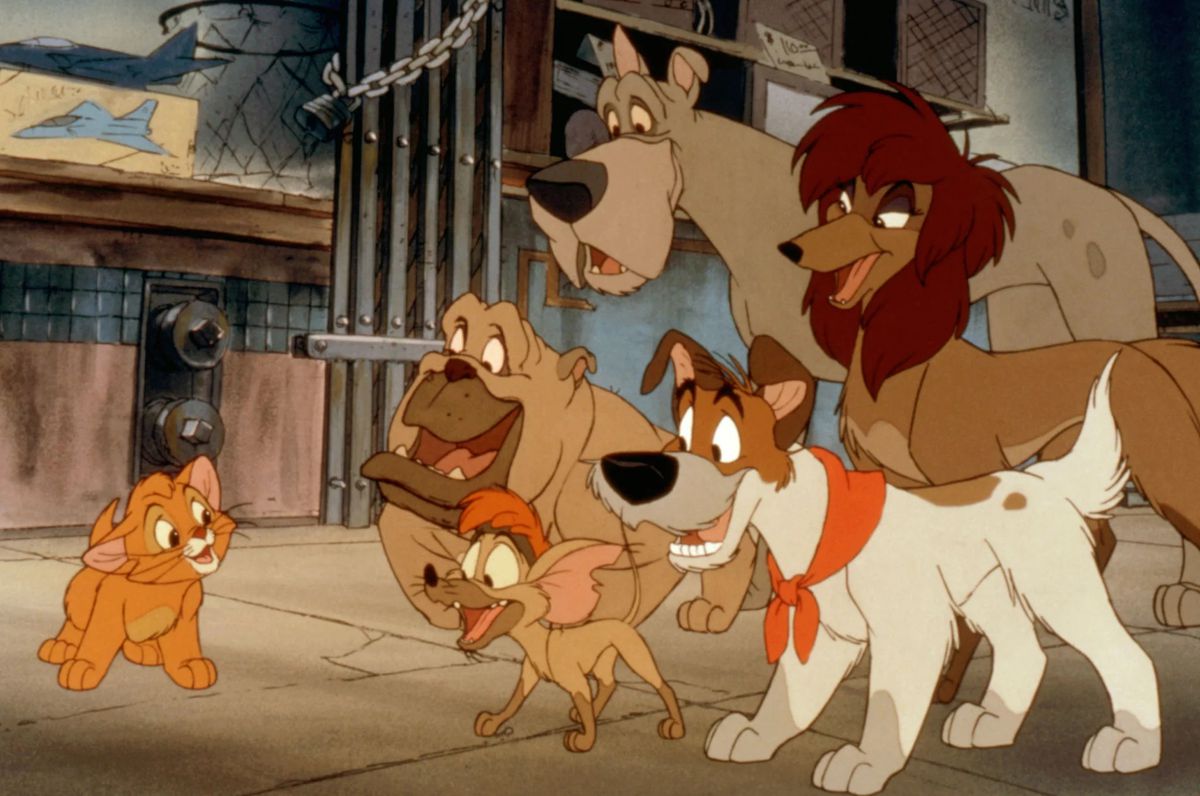
Image: Walt Disney Animation Studios
Aside from the fact that Disney transplants the action from Victorian England to 1980s New York City and replaces all the characters with talking animals, there’s barely any difference between these two stories! Seriously, though, this is about as far from the source material as you can get without completely ditching the plot. Dickens’ novel was a social commentary about the plight of the working-class poor. You can imagine that book being successfully translated as a Disney classic, but Oliver & Company isn’t it.
2. The Little Mermaid (1989)
Based on: Hans Christian Andersen’s short story “The Little Mermaid” (1837)
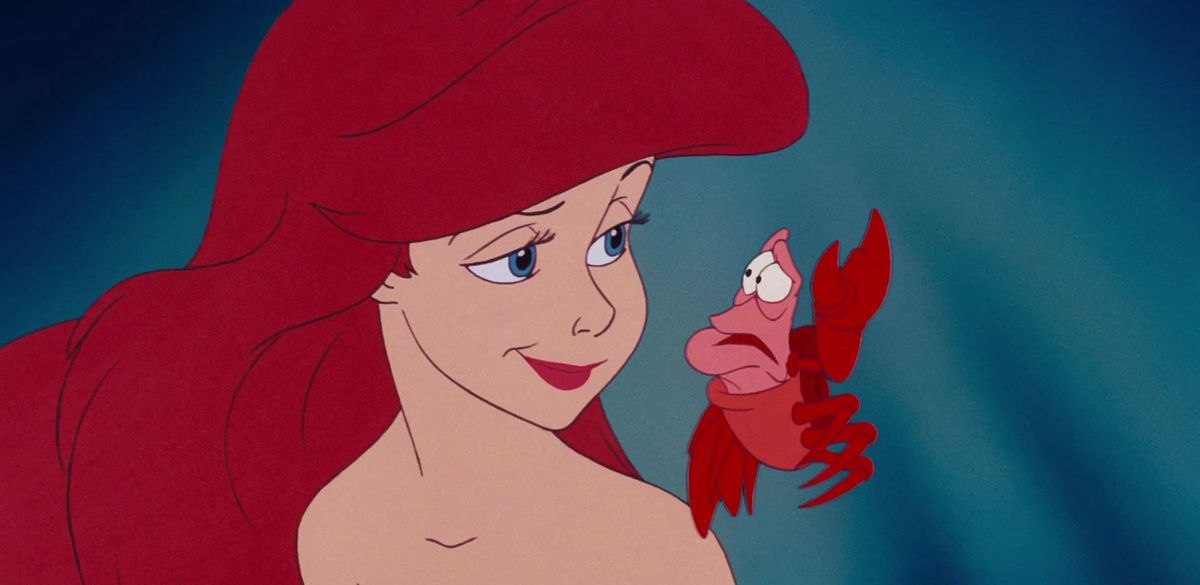
Image: Walt Disney Animation Studios
In the original “Little Mermaid” story, the Ariel figure (who never gets a name) wasn’t motivated by love, but by a hunger for immortality. Mermaids don’t have souls, but she’s told she’ll magically get one if she marries a human man. In Andersen’s world, it’s completely OK for mermaids to visit the surface world once they’ve turned 15, and she leaves the sea with her family’s blessing. Andersen also describes the mermaid’s transformation to her human form as an extremely painful process, and walking around on feet as an endless agony she has to suffer through. Perhaps the biggest difference is the ending. There isn’t a fairy-tale wedding on the printed page: The mermaid’s prince marries someone else. And while her sisters offer her a chance to return home if she murders both the prince and his new wife, she instead opts to throw herself into the sea — where she expects to evaporate into foam, as mermaids do when they die. She gets a different reward for her piety and mercy, though, in keeping with Andersen’s usual Christian fables.
1. The Hunchback of Notre Dame (1996)
Based on: Victor Hugo’s novel The Hunchback of Notre-Dame (1831)
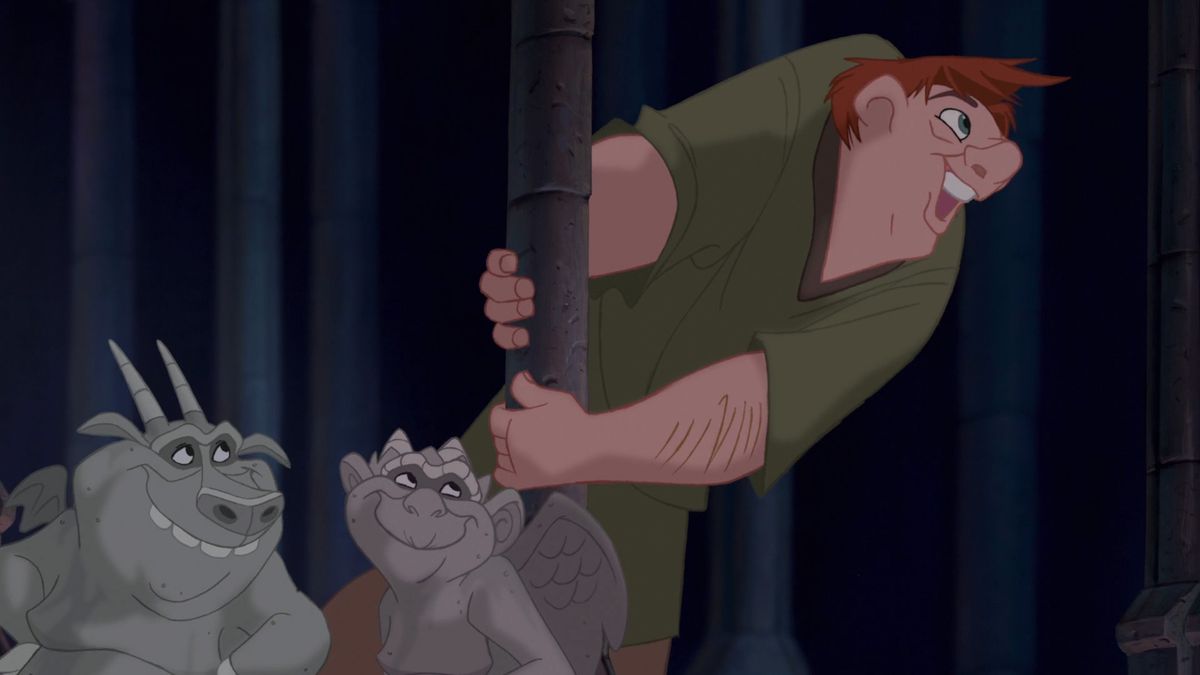
Image: Walt Disney Animation Studios
Where to start with this one? Victor Hugo’s Phoebus (voiced by Kevin Kline in the movie) is a sleazy player, not at all the heroic and compassionate hero of Disney’s adaptation. The villain Frollo is a man of the church, not a judge. In the novel, Esmeralda is hanged for attempted murder and Frollo is killed by Quasimodo, who himself dies from starvation while pining over Esmeralda’s grave. Disney also left out an important subplot concerning Esmeralda’s origins. In the book, Esmeralda, born to a prostitute, is kidnapped as a baby, with the infant Quasimodo substituted in her place. In summary, the novel is a somewhat cynical tale of misplaced passions leading to bad endings, wrapped up with some wry humor concerning the human condition. Disney’s version is a straight-up good-versus-evil love story.
